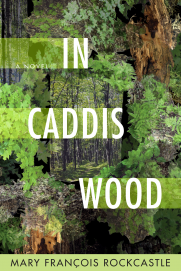Little Faith Nickolas Butler (2019)
In the title to this blog post, I don’t use the word “cult” lightly. I use it to mean a group professing a religious belief that they claim provides exclusive access to salvation. But this alone would not distinguish a cult from many mainstream religious groups. Cults often have arcane rules about conduct of life—rules that can be secretive. In addition, a cult demands absolute obedience to a leader, usually a charismatic man, and urges total allegiance to the group, alienating members from family and indeed from the greater society. The risk of exploitation of members by the cult’s leader is high.
I’ve noticed that the media don’t much use the term “cult” lately, rather giving these groups the benefit of the doubt as “new sects” or “alternative religious movements.” I was raised in the 1960s in a religious splinter group that fell short of being a cult but that could also have been given one of these more benign labels. I see a distinct tipping point between “new sect” and “cult”: When a member’s fervent adherence to the group leads the member to perform destructive (including self-destructive) acts that are widely recognized by civil society as unacceptable or even criminal, to me that group is clearly a cult.
Now, to get the novel at hand, Little Faith. In present-day rural Wisconsin, a retired couple, Lyle and Peg Hovde, are delighted when their long-estranged adult daughter, Shiloh, comes to live with them again. Shiloh brings with her Isaac, her five-year-old son. The Hovdes don’t ask about Isaac’s father; they’re just reveling in their newfound grandparenthood. And Isaac is a bright, sweet child.
The knot of this novel, however, arises when we find that Shiloh has become a member of a cult. True, Shiloh calls the group that she joins her “church,” but it has all the hallmarks of a cult. Lyle and Peg try to be respectful of Shiloh’s beliefs, not the least because they’re desperate to have good relationships with their only child and only grandchild. But the deceptive and damaging aspects of Shiloh’s beliefs become more and more apparent as the story wends through the seasons of a year. Lyle’s own struggles with religious belief weave in and out of the narrative.
Nickolas Butler’s prose is straightforward but occasionally lyrical, his characters are beautifully developed, and his plot is achingly tragic. I challenge any reader of Little Faith not to weep at the ending of the novel, which I will not spoil with a full revelation of the plot. An Author’s Note tells us that part of the story is based on an actual 2008 incident in Wisconsin, where Butler lives. Thus, Little Faith becomes a cautionary tale about the dangers of extremist, authoritarian groups that entrap needy souls in the name of religion.
Click here for my review of another of Nickolas Butler’s novels, The Hearts of Men.







